Contents
It is difficult for us to imagine our daily diet without potatoes, but people who want to lose weight first of all refuse it, considering it a high-calorie product. In fact, the calorie content of potatoes is lower than that of yogurt, which for some reason can be eaten with diets. This is unfair, because extra pounds are not added to us by potatoes, but by the fats in which they are cooked. So eat properly prepared meals and lose weight! In addition, potatoes are an important food product that supplies potassium, magnesium and iodine to our body.
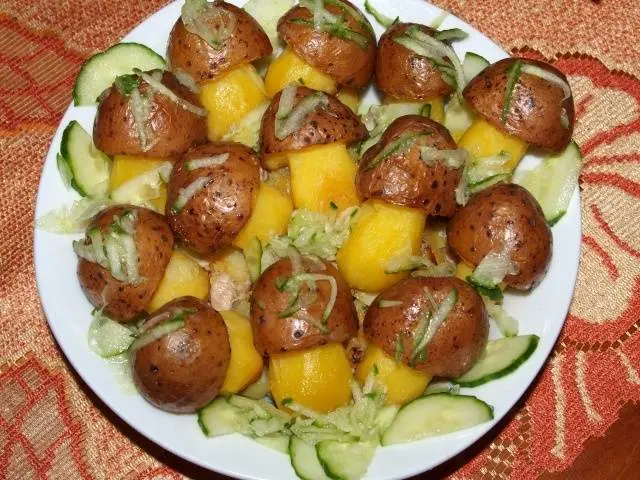
If there is a garden on the site, potatoes will definitely grow there. When there is enough space, it is planted a lot, so as to provide for itself for the whole winter. On small plots – just enough to eat plenty of young potatoes without risk to health and wallet. In any case, we hope for a good harvest, and for this we need not only to bury and then dig up the tubers, but also to follow the rules of germination, planting and care. In this article, we will look at fertilizer for potatoes when planting.
Potato fertilizer requirements
Any plant needs nutrients for the formation and development of leaves, fruits, shoots and root system. They are partly extracted from soil and water, but this is not enough for agricultural crops – we expect from them not so much an attractive appearance as a rich harvest. Fertilizers applied on time and in sufficient quantities before planting potatoes are a guarantee of the ripening of a large number of high-quality tubers.

The main nutrients required by the plant for successful development are macronutrients, namely nitrogen, phosphorus, potassium. Potato is a nutrient-responsive crop. He needs increased doses of potassium, but he does not like excess nitrogen, but he cannot do without it at all.
From each square meter, potatoes take out 47 g of fertilizers per season, and in the following ratio:
- nitrogen (N) – 43%;
- phosphorus (P) – 14%;
- potassium (K) – 43%.
Nitrogen
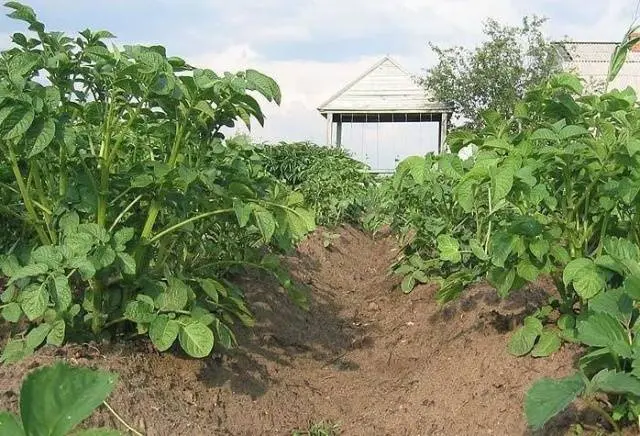
Nitrogen is vital for potatoes. It is part of proteins and serves as a kind of building material for the cells that make up the plant. With its shortage, first of all, the development of shoots slows down, and the leaves lose their green color. If the situation is not corrected, the plant may die or completely stop growing.
With an excess of nitrogen, the green mass increases greatly, and to the detriment of flowering, fruiting and the development of the root system. In the case of potatoes, we get a lush green bush with very large leaves and a few tiny nodules under the root. Even a slight excess of nitrogen fertilizer doses provokes the occurrence of rot.
Phosphorus
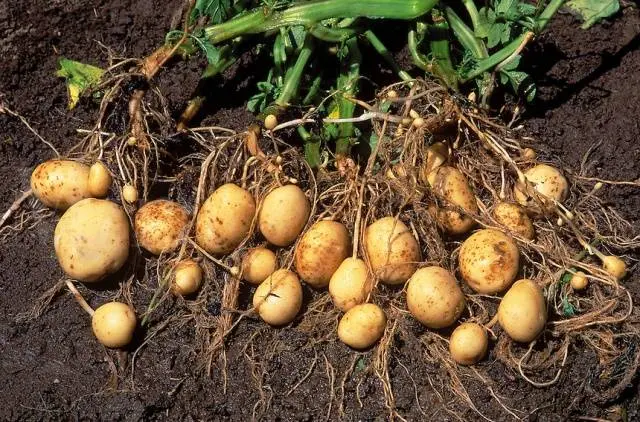
Phosphate fertilizers stimulate the development of the root system, flowering and fruiting. They are especially important in the early stages of plant development, and it is impossible to make up for their shortage during this period. Phosphorus also increases winter hardiness, which is directly related to the keeping quality of tubers.
Our plant needs phosphorus in moderation, neither its excess nor deficiency (within reason, of course) is a disaster. And in the early stages of development, the potato receives it from the tuber.
potassium
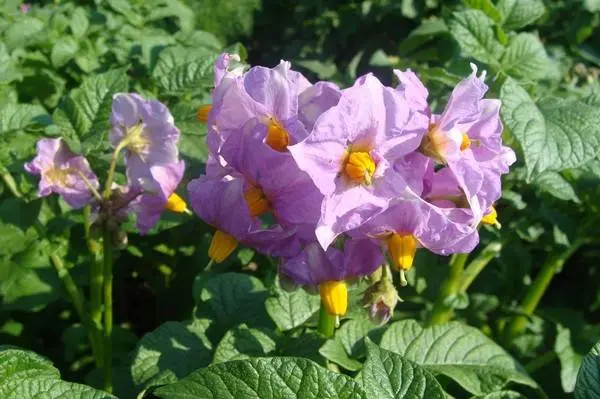
Potatoes are great lovers of potassium, which, unlike nitrogen and phosphorus, is not part of plant proteins, but is contained in cell sap. With a lack of this element, the plant absorbs nitrogen and phosphorus worse, does not tolerate drought well, growth processes stop, flowering may not occur.
If the potato receives a sufficient amount of potassium fertilizers, it becomes more resistant to diseases, in particular, to rot pathogens. It produces more starch, which improves the taste. This does not mean that we should mindlessly sprinkle potash fertilizers for potatoes when planting in the hole, it is important to strike a balance.
Trace Elements
Trace elements play a huge role in the life of the plant. But for potatoes planted in the spring and sent to the compost heap in the summer, the lack of them will simply not have time to become fatal, however, it will create enough problems.
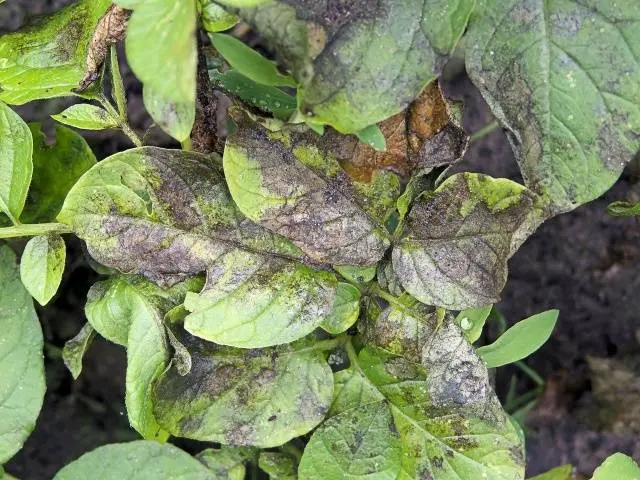
To all of us, the well-known phytophthora is nothing more than a lack of copper. Early and mid-early varieties of potatoes usually do not have time to get sick with it, but for medium-late and late varieties, phytophthora is a huge problem. But these varieties are the most delicious, as they contain the most starch.
Of the microelements for potatoes, boron, copper and manganese are of the greatest importance; apply them together with the main fertilizers.
Signs of a lack of batteries
Macronutrient deficiencies are visually most easily identified by old leaves.
Lack of nitrogen

If insufficient nitrogen is applied under the potato in the spring, the plant acquires an unusual light color, and the lower leaves turn yellow. True, the leaves may turn yellow with insufficient watering, but then the soft tissues between the veins turn yellow first. Nitrogen starvation is characterized by the fact that it is the veins that change color first of all, and the tissues located between them can retain a green color. In addition, the plant is strongly stretched and stops growth.
Lack of phosphorus
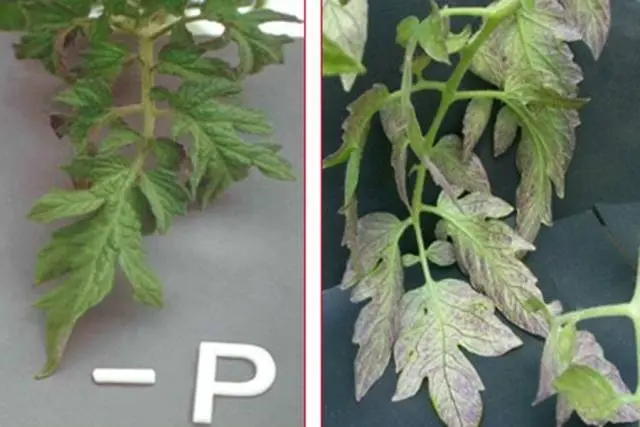
In insufficiently phosphorus-fertilized potatoes, just as with a lack of nitrogen, the formation of thin shoots and general oppression are observed. But the leaves, on the contrary, acquire a very dark color, and with a strong or prolonged phosphorus starvation – a purple hue. When tissue dies, dark spots appear.
Potassium deficiency
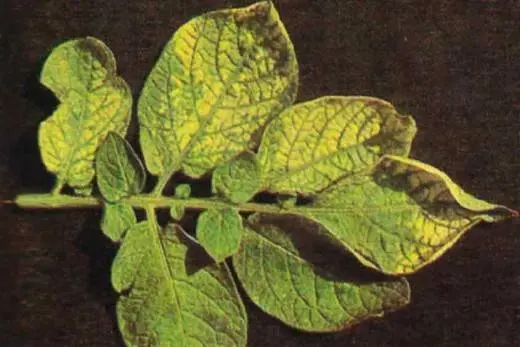
If potatoes were poorly fertilized with potassium in the spring, symptoms often do not capture the entire leaf, but only parts of it. Chlorosis areas of a yellow tint appear on them. Most often they appear around dried areas at the tip or along the edge of the leaf, between the veins. Over time, potatoes become similar to those affected by rust.
Fertilizing the soil before planting potatoes

It is best to think about top dressing in the fall. Ideally, one square meter of fertilizer for potatoes is applied in the following composition:
- ammonium sulfate – 50 g or ammonium nitrate – 30 g;
- superphosphate – 50 g;
- wood ash – 200-500 g.
On acidic soils, instead of ash, you can take 200 g of dolomite flour.
If you have healthy soils that are little affected by pests and diseases, it will be good to add 4 kg of well-rotted manure and 200-500 g of wood ash for digging.
Fertilizing potatoes during planting

Potato fertilizer significantly affects the yield. This is due to the fact that its root system is relatively poorly developed, in addition, the tubers are modified stems, therefore, they are also fed by the roots. Nutrients are contained in the soil, but in the early stages of development, potatoes absorb them very poorly. The question arises of how to fertilize potatoes when planting in a hole. Let’s look at this issue in detail.
Organic fertilizer for potatoes when planting
When we think about what kind of fertilizer is best for potatoes when planting, organics come to mind first of all. This is really the best solution. Well-rotted cow dung, wood ash, humus are suitable here.
Ash

Wood ash is often referred to as the No. 1 fertilizer. This is not far from the truth – it holds the record among organic fertilizers in terms of composition. Although ash is traditionally considered a supplier of potassium, it contains phosphorus, boron, manganese, calcium and many other elements. There is only little nitrogen in it, but this can be easily corrected by introducing other substances.
It is also good because it not only feeds plants, but also structures the soil, loosens it, changes acidity, has a beneficial effect on beneficial microorganisms and destroys many pathogens. Two more significant advantages of ash: it is well absorbed by plants and is a long-term fertilizer. This means that the ash used as a fertilizer for potatoes during planting can free us from potash supplements until the end of the season.
We offer you to watch a short video about the properties of ash and the features of its introduction:
Manure
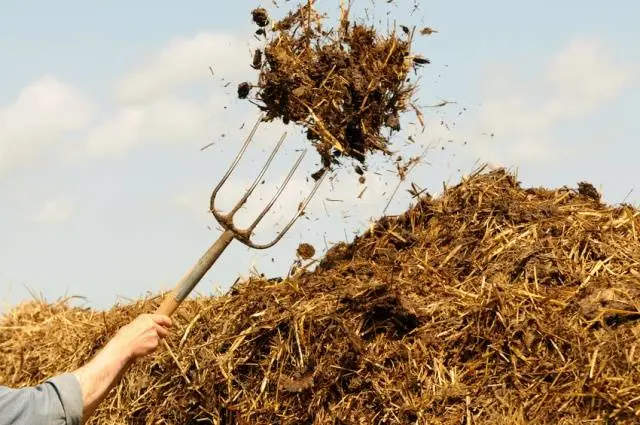
Manure is a wonderful organic fertilizer, rich in nitrogen, containing potassium, phosphorus, calcium, magic and a host of other useful elements. In addition, it improves the soil, making it more water and breathable. The most important thing is not to bring fresh or poorly rotted manure under the potatoes, which is less than a year old.
Humus
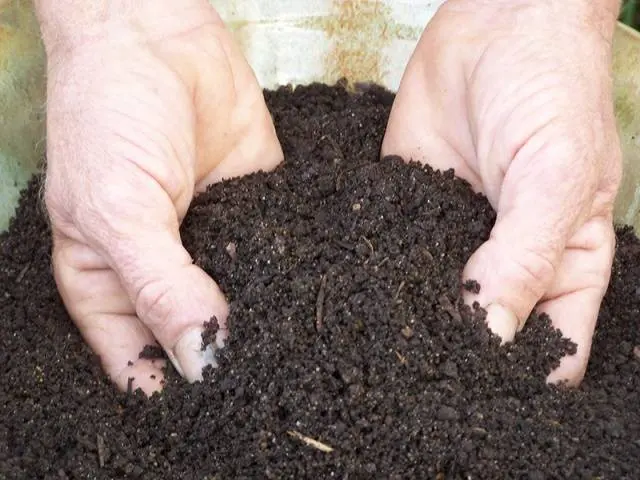
Humus is compost or manure that has been decomposing for three years or more. For potatoes, it is better to take humus obtained from manure. It is ideal and suitable for any culture.
The best mineral fertilizers for potatoes
It is not always possible to put organic fertilizer in the hole when planting potatoes. Only rural residents who keep cows and heat with firewood have no problems with this. Summer residents and residents of the private sector have to buy all this, and if a manure truck has hit the site, then they try to use it for more “valuable” crops.

If you have to be content with mineral fertilizers, there are a few things to consider when choosing them:
- Potatoes require potash fertilizers without chlorine or with a small amount of it.
- Nitrogen on neutral soils is best absorbed by potatoes in the form of ammonium, and on acid soils – in the form of nitrates.
- In order not to bore you with lengthy explanations on which soils which phosphorus fertilizers work better, and also how the form of nitrogen introduced into the soil affects them, let’s say briefly – superphosphate is the best phosphorus fertilizer for potatoes. Moreover, it is introduced into acidic soils in granular form.
If funds allow, it is best to buy a special mineral fertilizer for potatoes. On sale there are top dressings from different manufacturers, and their price can be both very high and quite acceptable even for a thrifty buyer. But of course, even the cheapest specialized fertilizers are more expensive than superphosphate and ammonium.
How to fertilize potatoes during planting
Fertilizing a potato field in the spring is completely irrational. It is best to do this directly into the hole at the time of planting.

If you have chosen organic fertilizers, then add humus or compost to the hole along with sand: a liter jar for poor soils and a half-liter jar for black soil. Then add a handful of ash (for those who like to do everything exactly – 5 tablespoons), mix well with the soil and plant potatoes.
Mineral fertilizers are placed in the hole according to the instructions, mixed with sand and soil.
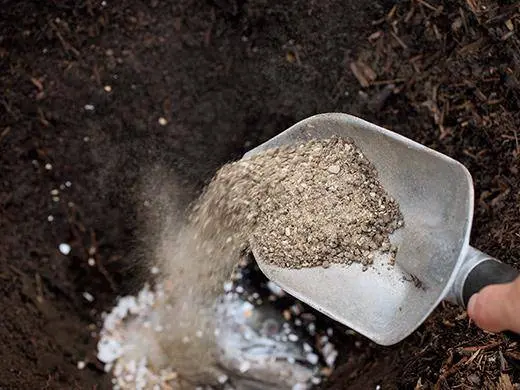
Conclusion
We told you what fertilizers to apply to the holes when planting potatoes. We hope that the presented material was useful to you. Good harvest!









